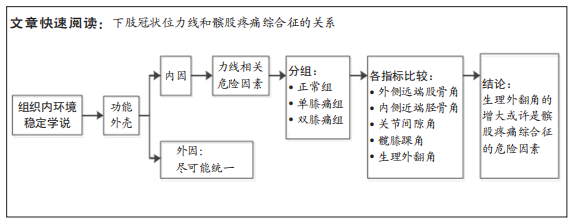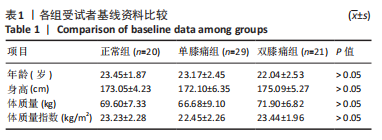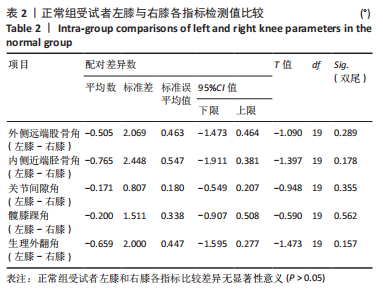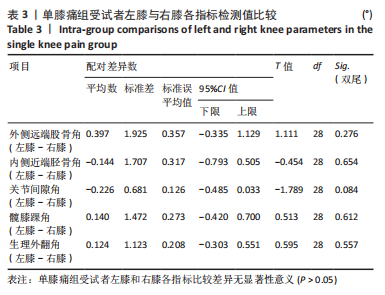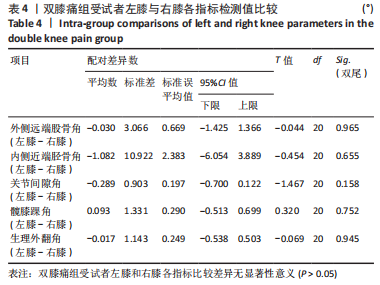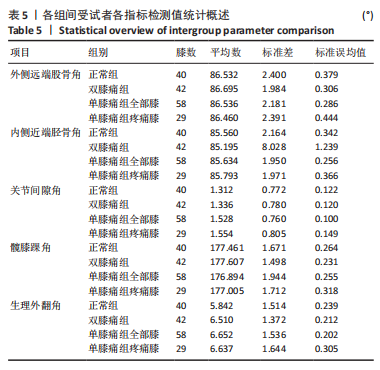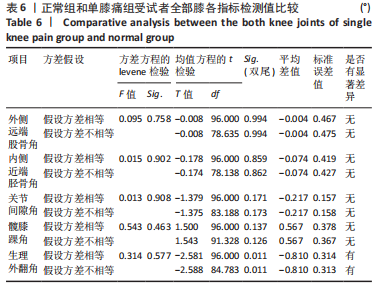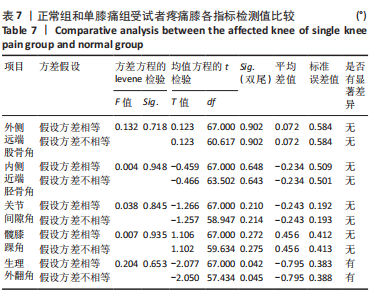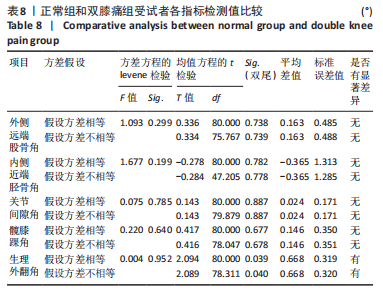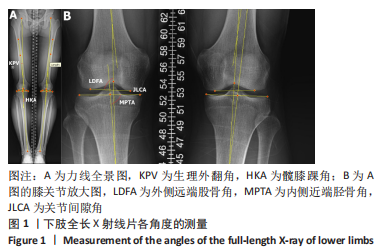[1] CROSSLEY KM, STEFANIK JJ, SELFE J, et al. 2016 Patellofemoral pain consensus statement from the 4th International Patellofemoral Pain Research Retreat, Manchester. Br J Sports Med. 2016;50(14):839-843.
[2] BOLING M, PADUA D, MARSHALL S, et al. Gender differences in the incidence and prevalence of patellofemoral pain syndrome. Scand J Med Science Sports. 2010;20:725-730.
[3] WITVROUW E, CALLAGHAN MJ, STEFANIK JJ, et al. Patellofemoral pain: consensus statement from the 3rd International Patellofemoral Pain Research Retreat held in Vancouver, September 2013. Br J Sports Med. 2014;48:411-414.
[4] STATHOPULU E, BAILDAM E. Anterior knee pain: a long-term follow-up. Rheumatology. 2003;42:380-382.
[5] PRICE AJ, JONES J, ALLUM R. Chronic traumatic anterior knee pain. Injury. 2000; 31:373-378.
[6] SANDOW MJ, GOODFELLOW JW. The natural history of anterior knee pain in adolescents. J Bone Joint Surg Br. 1985;67:36-38.
[7] THOMAS M, WOOD L, SELFE J, et al. Anterior knee pain in younger adults as a precursor to subsequent patellofemoral osteoarthritis: a systematic review. BMC Musculoskelet Disord. 2010;11:201.
[8] CROSSLEY KM. Is patellofemoral osteoarthritis a common sequela of patellofemoral pain? Br J Sports Med. 2014;48:409-410.
[9] 许杰,周文琪,罗小兵.髌股疼痛综合征研究热点与内容的可视化分析[J].中国组织工程研究,2022,26(12):1877-1887.
[10] 孙茂淋,何锐,张颖,等.健康人群下肢力线测量在全膝关节置换术中的应用[J].中华骨与关节外科杂志,2019,12(8):584-588.
[11] 吴伟,郭万首.下肢全长X线检查的临床应用及其精准性的研究进展[J].中华骨与关节外科杂志,2017,10(1):84-87.
[12] POST WR, DYE SF. Patellofemoral Pain: An Enigma Explained by Homeostasis and Common Sense. Am J Orthop (Belle Mead NJ). 2017;46(2):92-100.
[13] DAVIS IS, POWERS CM. Patellofemoral pain syndrome: proximal, distal, and local factors, an international retreat, April 30-May 2, 2009, Fells Point, Baltimore, MD. J Orthop Sports Phys Ther. 2010;40:A1-16.
[14] POWERS C, BOLGLA L, CALLAGHAN M, et al. Patellofemoral Research Retreat, Ghent, Belgium, patellofemoral pain: proximal, distal, and local factors. J Orthop Sports Phys Ther. 2012;42:A1-54.
[15] GILES LS, WEBSTER KE, MCCLELLAND JA, et al. Does quadriceps atrophy exist in individuals with patellofemoral pain? A systematic literature review with meta-analysis. J Orthop Sports Phys Ther. 2013;43:766-776.
[16] VAN TIGGELEN D, WITVROUW E, COOREVITS P, et al. Analysis of isokinetic parameters in the development of anterior knee pain syndrome: a prospective study in a military setting. Isokinet Exerc Sci. 2004;12:223-228.
[17] WARYASZ GR, MCDERMOTT AY. Patellofemoral pain syndrome (PFPS): a systematic review of anatomy and potential risk factors. Dyn Med. 2008;7:9.
[18] WITVROUW E, LYSENS R, BELLEMANS J, et al. Vanderstraeten G. Intrinsic risk factors for the development of anterior knee pain in an athletic population. A two-year prospective study. Am J Sports Med. 2000;28:480-489.
[19] MUCHA MD, CALDWELL W, SCHLUETER EL, et al. Hip abductor strength and lower extremity running related injury in distance runners: a systematic review. J Sci Med Sport. 2017;20:349-355.
[20] SEMCIW A, NEATE R, PIZZARI T. Running related gluteus medius function in health and injury: a systematic review with meta-analysis. J Electromyogr Kinesiol. 2016; 30:98-110.
[21] RATHLEFF MS, RATHLEFF CR, CROSSLEY KM, et al. Is hip strength a risk factor for patellofemoral pain? A systematic review and metaanalysis. Br J Sports Med. 2014;48:1088.
[22] CARLSON VR, BODEN BP, SHEN A, et al. The tibial tubercle–trochlear groove distance is greater in patients with patellofemoral pain: implications for the origin of pain and clinical interventions. Am J Sports Med. 2017;45:1110-1116.
[23] AYSIN IK, ASKIN A, METE BD, et al. Investigation of the relationship between anterior knee pain and chondromalacia patellae and patellofemoral malalignment. Eurasian J Med. 2018;50:28-33.
[24] ERDOGANOGLU Y, PEPE M, KAYA D, et al. Lower extremity alignment due to patellofemoral syndrome and dynamic postural balance. J Orthop Surg (Hong Kong). 2020;28(1):2309499019900819.
[25] CITAKER S, KAYA D, YUKSEL I, et al. Static balance in patients with patellofemoral pain syndrome. Sports Health. 2011;3(6):524-527.
[26] NGUYEN AD, SHULTZ SJ. Identifying relationships among lower extremity alignment characteristics. J Athl Train. 2009;44(5):511-518.
[27] LANKHORST NE, BIERMA-ZEINSTRA SMA, VAN MIDDELKOOP M. Risk factors for patellofemoral pain syndrome: A systematic review. J Orthop Sports Phys Ther. 2012;42(2):81-94.
[28] PARK SK, STEFANYSHYN DJ. Greater Q angle may not be a risk factor of patellofemoral pain syndrome. Clin Biomech (Bristol, Avon). 2011;26(4):392-396.
[29] 凡廷旭,黄伟,胡宁,等.女性下肢力线旋转与髌股关节疼痛的临床研究[J].重庆医学,2014,43(32):4272-4279.
[30] BOLING MC, NGUYEN AD, PADUA DA, et al. Gender-Specific Risk Factor Profiles for Patellofemoral Pain. Clin J Sport Med. 2021;31(1):49-56.
[31] SELFE J, JANSSEN J, CALLAGHAN M, et al. Are there three main subgroups within the patellofemoral pain population? A detailed characterisation study of 127 patients to help develop targeted intervention (TIPPs). Br J Sports Med. 2016;50(14):873-880.
[32] SELFE J, CALLAGAN M, WITVROUW E, et al. Targeted interventions for patellofemoral pain syndrome (TIPPS):classification of clinical subgroups. BMJ Open. 2013;3(9):e003795.
[33] SELHORST M, RICE W, DEGENHART T, et al. Evaluation of a treatment algorithm for patients with patellofemoral pain syndrome: a pilot study. Int J Sports Phys Ther. 2015;10:178-188.
[34] CITAKER S, KAYA D, YUKSEL I, et al. Static balance in patients with patellofemoral pain syndrome. Sports Health. 2011;3(6):524-527.
|
